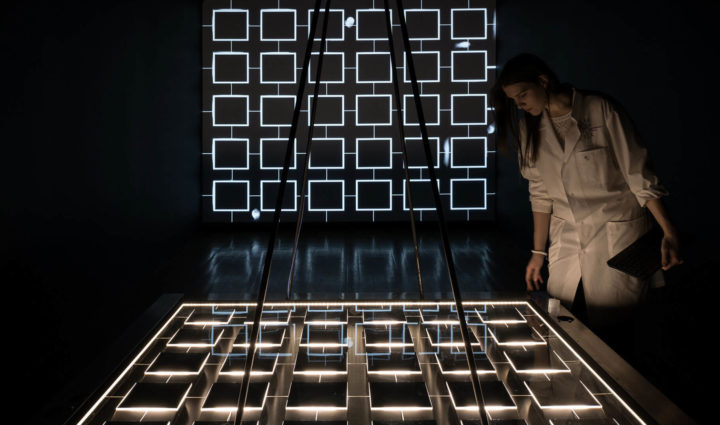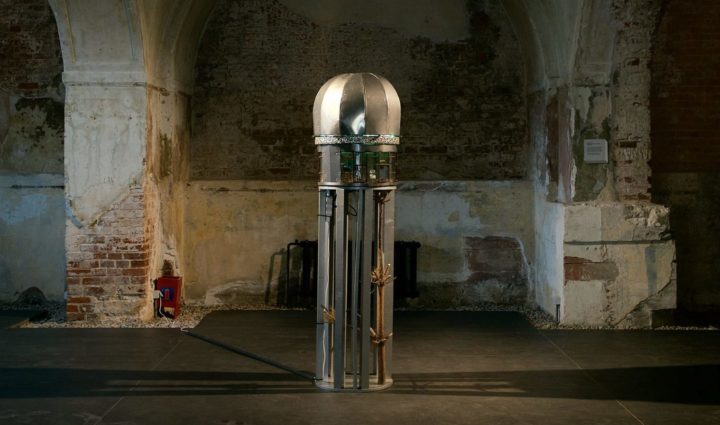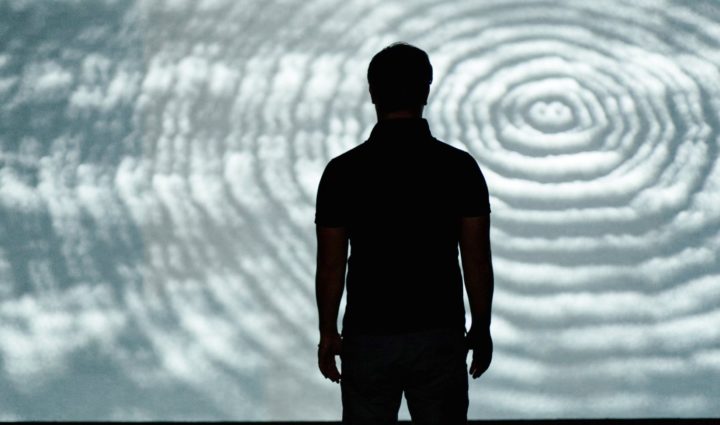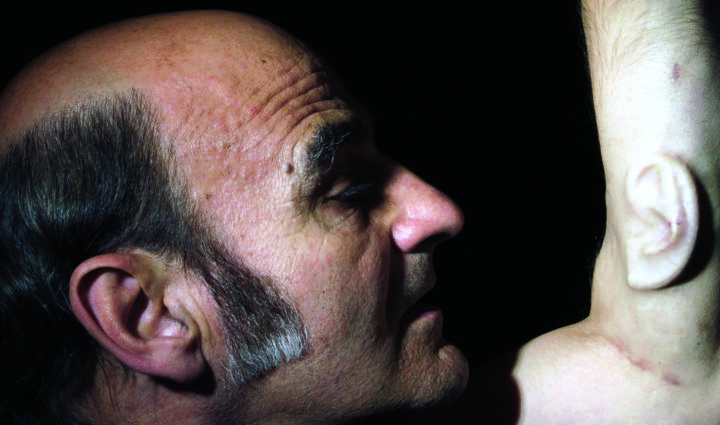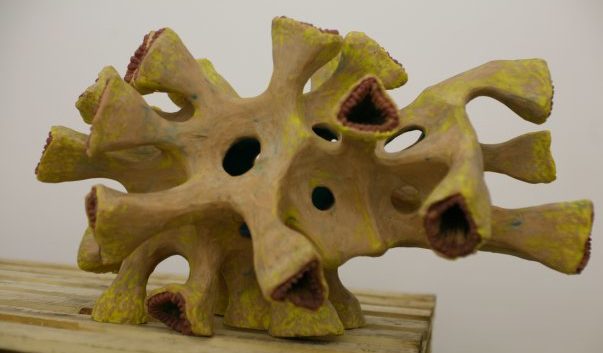THE ART & SCIENCE EXPERIMENT IN THE LABORATORY OF KINETICS, ADSORPTION AND CATALYSIS
Participants of the experiment:
- Anya Zhelud, artist
- Dr. Alexander Avetisov, scientist, PhD in Chemistry Science
Objectives:
- To study mechanisms of mutual perception of the artist and the scientist;
- To study adequacy and degree of understanding of each other practices;
- To define possible forms of interaction of the artist and the scientitist within the space of the experiment.

Conditions and methodology of the experiment:
1. Why this artist: her artworks are determined by formal plastic principles.
2. Why this scientist: his professional practice are focused on modeling physical and chemical processes with long-term outlook of their practical application.
3. The artist is familiarized with professional activity of the scientist.
4. The scientist is familiarized with professional activity of the artist.
5. Artistic reaction on professional practics of the scientist is documented.
6. Scientific reaction on professional practics of the artist is documented.
7. The dynamics of representation of each other practics is tracked down in the form of the curatorial discrpiption in due course of the experiment.
8. The common exhibition and installation space is build during the experiment by method of stratifying – artwork – scientific reaction, scientific work – art reaction.
Course of the experiment:
In summer 2008 the artist has visited laboratories of Institute of Pysical Chemistry and got acquainted with the basic directions of its activity. Thus, on the one hand, she was impressed with scales and forms of glass vacuum apparatus, on the other hand, she doubted the relevance of the participation in the experiment as its artistic inner world is self-sufficient and alien to conceptual approaches (the frameworks of the experiment were felt as rigid constraints of her will and self-expression).
At the same time the drustic change of artist’s system of form and content principles became observable – her works are more objects and installations now than sculpture, even painting than «three-digital graphics». It seems as if this process of change has appeared to be at least «catalyzed» by scientific environment and probably, partly, became a reaction on semantic, luinguistic and scale incompatibility with it. Some months later the artist has created the series of new artworks.
So they have met. For the first time the scientist saw the works of the artist and invited her to visit his laboratory. During several weeks the researchers explained their work to the artist, they described chemical processes, specificity of chemical apparatuses ….

The artist started to sketch the apparatuses that attracted her attention, she did it without understanding clearly the scientific specificity but interested in definition of physical borders of apparatus functioning. So this is how the series «Graphic reactions on scientific apparatuses» started.
Attentively considering objects of the artist and operating within the limits of curator’s line (i.e. not to step beyond the scientific approach), the scientist created the text descriptions of some works of the artist, mainly treating them from the materials technology concept – chemical and physical properties and functional use of the materials of which the art objects were made. The scientist has presented one of his research works as the text material for building up the exposition space of the experiment.
Thus, it has appeared that the series «Graphic reactions on scientific apparatuses» is an artistic, and probably inadequate from the scientific point of view response to the self-sufficient scientific judgements. This inadequacy became symmetric to positivistic consideration of art objects by the scientist.
In the last phase of the experiment the scientist has fixed his own increasing interest to the nature and displaying possibility of technologizing the creative act in a scientific context.
Dynamics of change of the experiment space substantially depressed the artist, at this particular time she reflected upon the position in this experiment and titled it – «Not the artist you expected to see». From this moment on a psychological component of artists’s experiences was embodied in a self-portrait (this figure lying on a floor has appeared to be the objectification of collateral psychological effect of the experiment). Contrary to, and simultaneously in view of the necessity of co-presence in a scientific “physical and chemical” context the artist has expressed emotional fullness, complexity, process-stressed character (instead of productivity) experiment.
The experiment will be analyzed and summarized following the results of the exhibition.
Competent opinions, the judgements of spectators fixed in the «OBSERVATION MAGAZINE» will become a part of experimental data.
Daria Parkhomenko, curator











